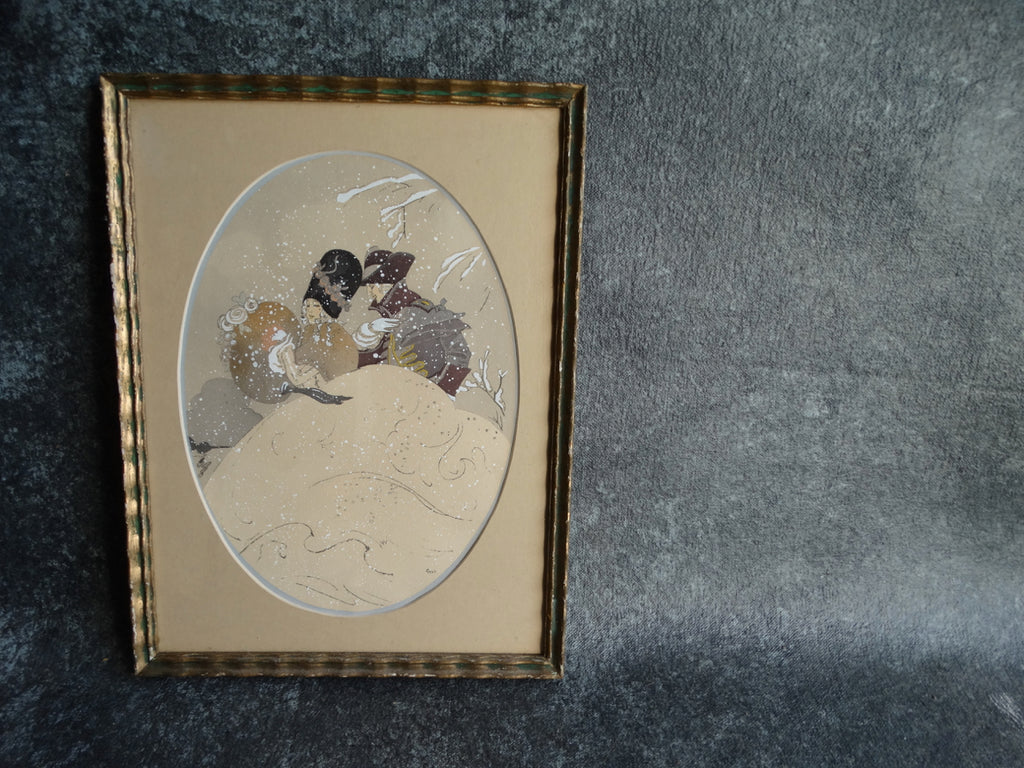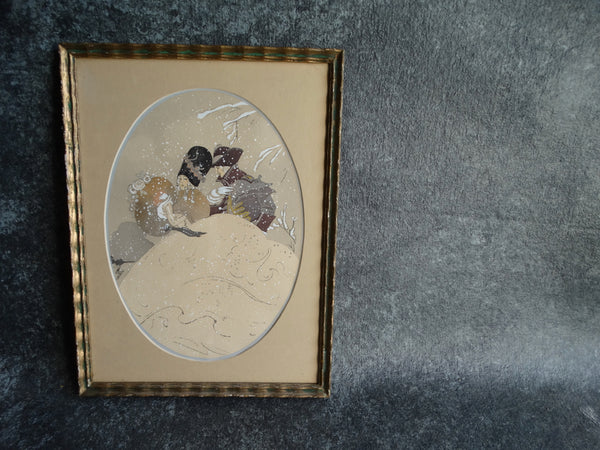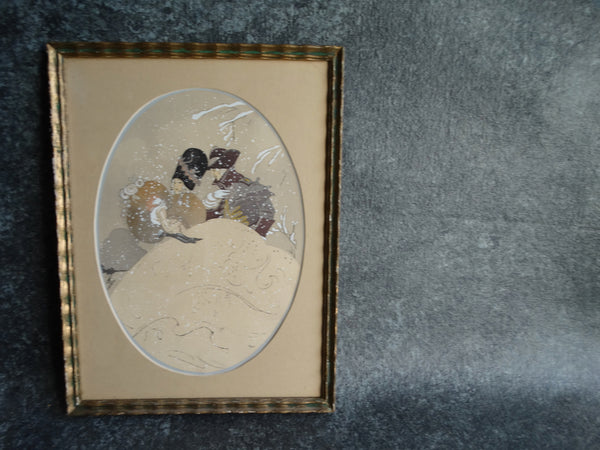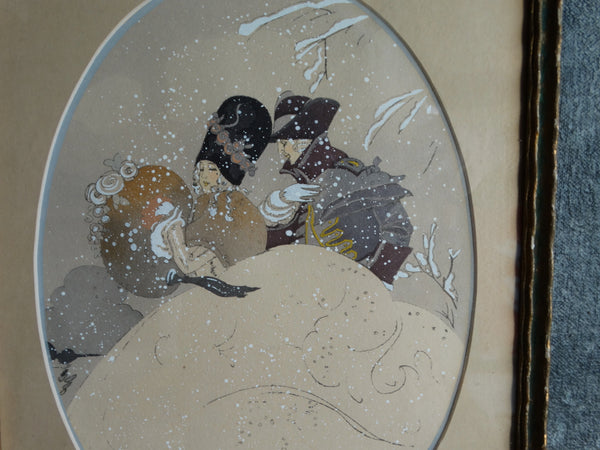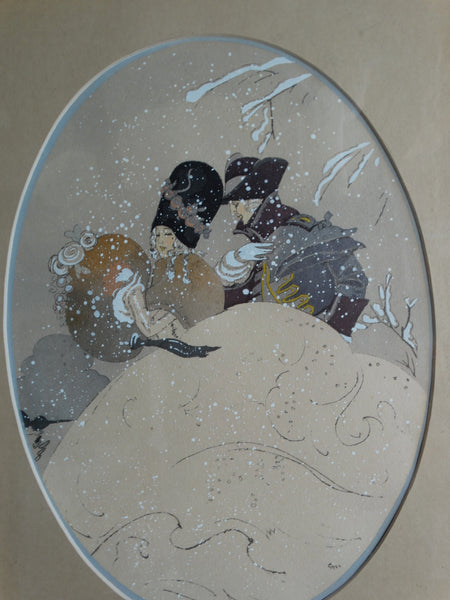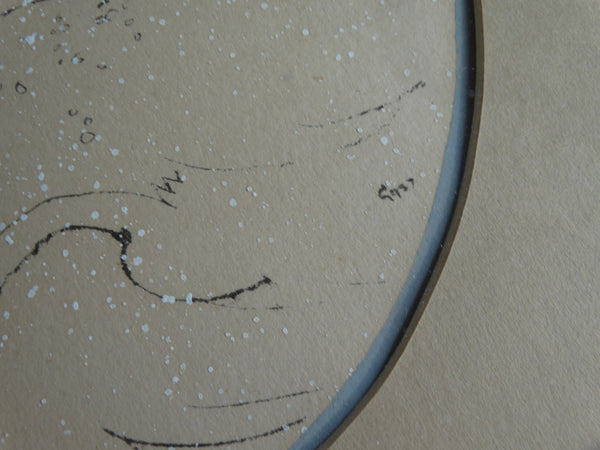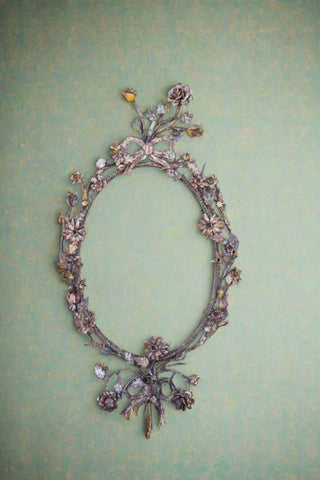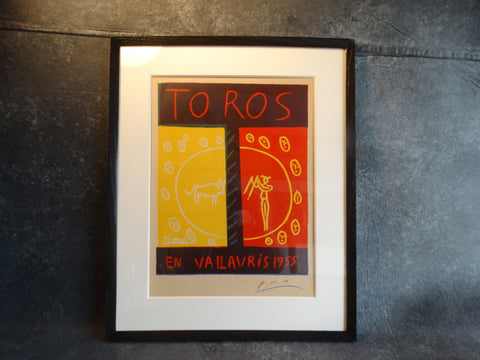Romantic Winter Fantasy À La Russe - Boudoir Art - Pochoir c 1920s P2564
Well, first, what is a boudoir, really? It is a woman's private space, for reading a book, or to collect her thoughts, even to just plain simmer down (the word is derived from the French verb bouder, to sulk), and, sometimes, to receive a friend... or a lover. And Boudoir Art? Paintings and prints, usually quite small, that speak to her femininity: images of fashion, and romantic courtship usually, and not to be confused with boudoir photography by a long shot. And these lovely works achieved a certain perfection in the first decades of the 20th Century.
And here we have the 18th century imagined by the jazz age, in fact, as an escape from the 20s! All that roaring could get on one's nerves from time to time. This delicious idyll then was just what the soul doctor ordered.
Our best guess at the signature is Gast or Gost or Gyst: whoever that was they were terrific.
Art measures 9 3/4" x13" and the frame is 7" x 10".
The pochoir process, characterized by its crisp lines and brilliant colors, produces images that have a freshly printed or wet appearance.
Pochoir plates were regularly used in French fashion journals, such as Le Jardin des Dames et des Modes and the Gazette du Bon Ton: arts, modes & frivolités, created by well-known artists such as George Barbier, to illustrate costume styles and set the tone for haute couture in the first half of the 20th century. Pochoir images are also contained in illustrated French industrial design, interiors, textile, and architecture folios produced primarily in the 1920's and 1930's that document and promote the Art Nouveau and Art Deco style. French pattern books of this period, consisting entirely of pochoir images of floral, insect-animal, and geometric forms, were created to inspire primarily fabric, interior and wallpaper designers.

